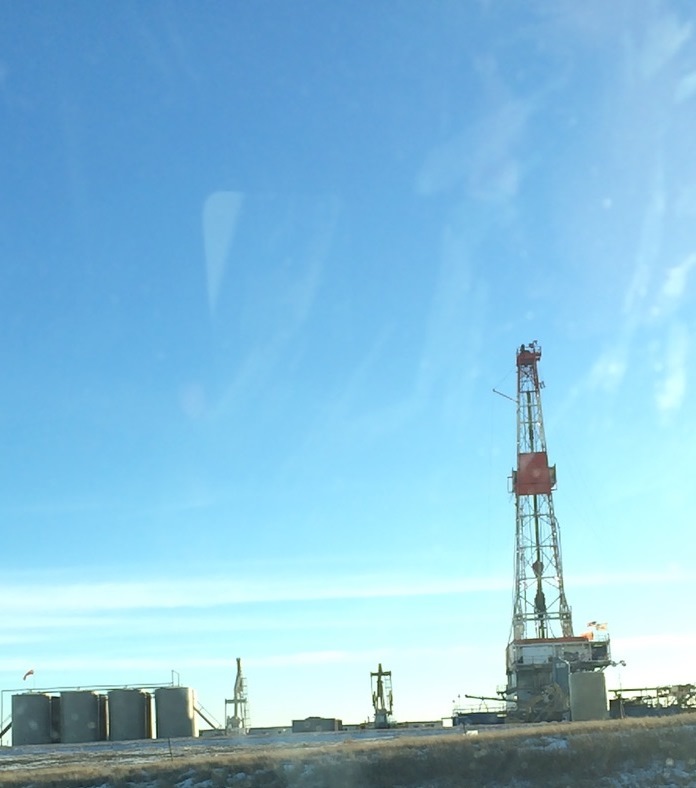
Will production of shale oil recover as oil prices rise? I’ve seen several articles discussing whether that can or will happen. Three articles saying yes, no, and maybe so.
Yes.
2/29 – Reuters at CNBC – US shale’s message for OPEC: Above $40, we are coming back – Multiple comments indicate that $40 oil today is like $70 oil a year ago.
Continental Resources says will start drilling if US crude increases to mid $40 range. Whiting Petroleum will start completing DUC wells if oil is in the low 40s. A year ago comments were that companies would start increasing the drilling if oil hit $70.
Article says Hess reduced the cost of a new well by 28% over the last year.
EOG says they have these rights for 3,200 wells which would produce a rate of return of 30% when oil is at $40.
Implication of these comments is shale production would likely ramp up when prices move into the 40s, perhaps more likely the high 40s. That would create substantial pressure on worldwide oil prices, keeping them from rising too far.
No.
3/15 – Wall Street Journal – Many Shale Companies Are Unable to Ramp Up Oil Output – Article raises a great point that just as output from shale oil has fallen slower than anyone expected, there are different reasons that shale producers may be challenged to ramp up production when prices increase.
There are practical issues beyond somehow being able to raise capital to fund increased production. Article points out that there isn’t anyone flush with cash.
Deeper issues have to do with issues like skilled workers have scattered to the four winds, equipment is idled and thus not available. Comment from IHS suggests it would take two months to get lots of rigs back into production. (Observation: that would be lightning fast compared to how long huge projects take to develop.)
One final factor strikes me – oil prices not only need to recover to the point where drillers can make money, there will need to be an expectation that prices will remain at that recovered level for a reasonable length of time.
On the other hand, the article is taking the time perspective what could be done one or two or three months out. It is unlikely drilling activity will take off that fast. However, if we look at the time horizon of typical major projects, where it might be two or four years before the first oil is produced, shale oil could still respond in what would otherwise be superfast for energy production.
Oh, those idled oil rigs? They are parked on fields around the Dakotas. Not that far away.
Maybe so.
3/15 – The Million Dollar Way – Comments and Commentary on Whether the Bakken Can Ever Ramp Up Again – In response to the previous article, Mr. Oksol think things could change a lot quicker than the author of the article suggests.
In terms of capital, all companies may currently be seriously stressed. On the other hand, keep in mind the astronomical rate of return on a shale well – if oil hits and sustains at $45, $50, or $60 there will be massive amounts of capital that appears out of nowhere.
Those oil rigs that used to be in operation haven’t turned into dust. They are parked somewhere. They may not be able to go into operation by a week from Monday, but they can be trucked out to a new well anywhere in America quickly.
In terms of staffing to run the rigs which are idle, Mr. Oksol points out the transition from no rigs back in 2005 and a few years later there were 200 active rigs. When the word goes out the drilling companies are definitely short on staff, there will be a bunch of experienced roughnecks jump in their trucks and drive north.
Obstacles that will not exist this time are revealed by the existence of a pipeline network, crude-by-rail facilities, knowing where there is enough sand and ceramic for proppant, and the knowledge to get drilling done really fast to produce high-output wells.
A few other factors that affect how fast things could spool up. Keep in mind the time to drill to total depth was in the range of 45 or 60 days at the start of the boom and is now 15 days. How long will it take to get hundreds of any new wells producing? Keep in mind is something in the range of a thousand wells have been drilled but not fracked – they could come online really fast.
Could North Dakota go back to 150 or 200 new wells a month in 30 or 60 days? Probably not. I will make a someone educated guess that level of output could be reached within six months instead of several years like before.